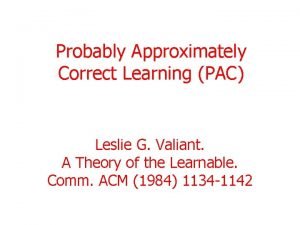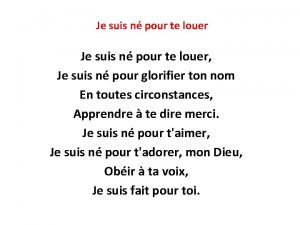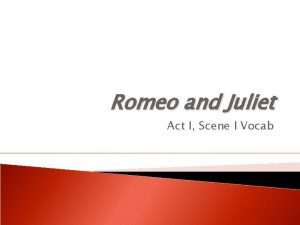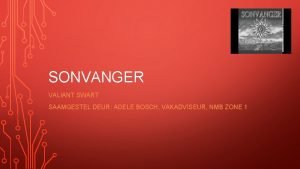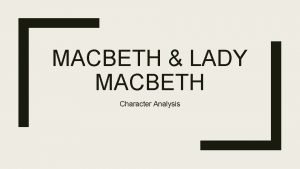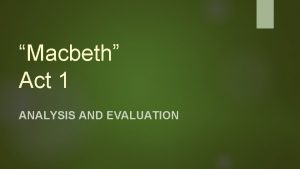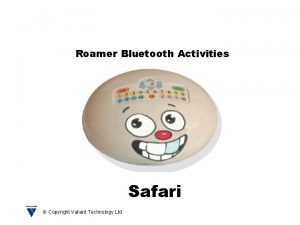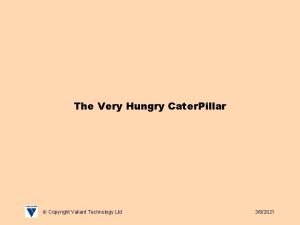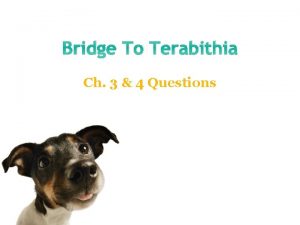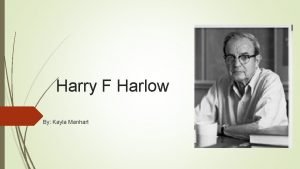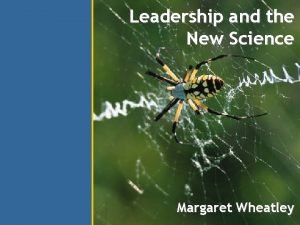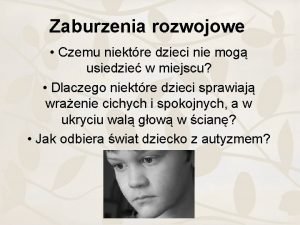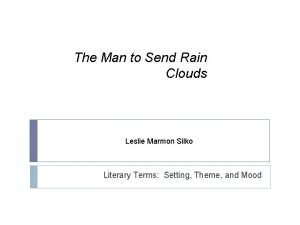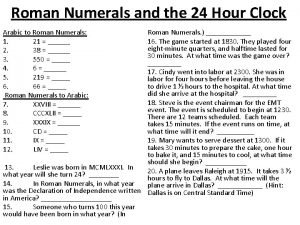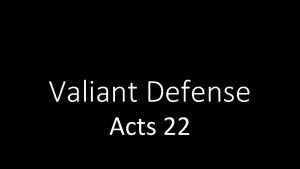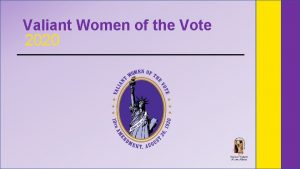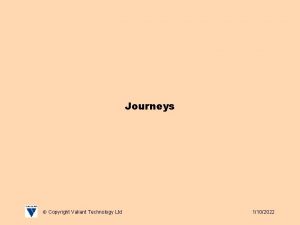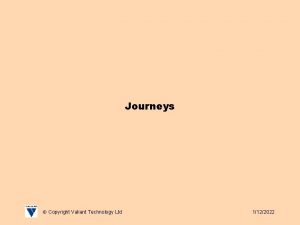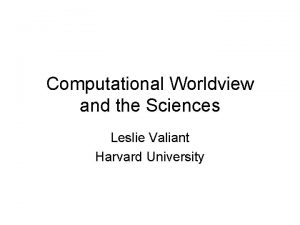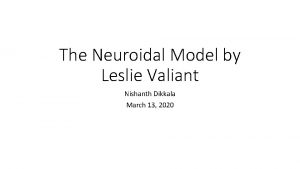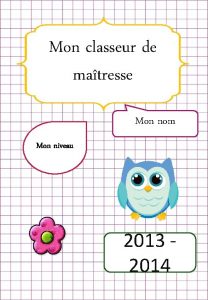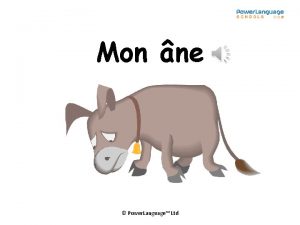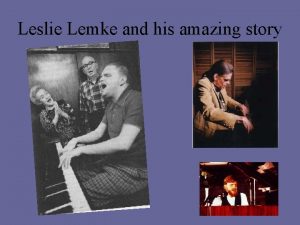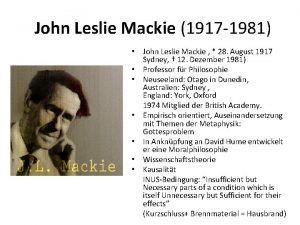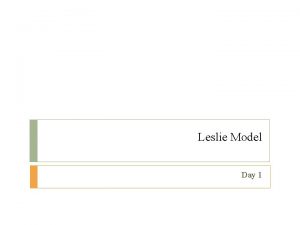Leslie Valiant Margaret Neterval mon 2 hu and














- Slides: 14


Leslie Valiant Margaret Neterval (mon 2 hu) and Emily Mc. Clure (eem 9 dp)

Born 1949 in Britain Leslie Valiant Education: King’s College, Cambridge Imperial College London University of Warwick (Ph. D) Teaching Career: Carnegie Mellon University Leeds University of Edinburgh Harvard University (1982 -present) Brilliant computer science work in computational learning Nevanlinna Prize (1986) Knuth Prize (1997) EATCS Award (2008) Turing Award 2010

The other awards • Nevanlinna (1986): an award concerning the mathematical aspects of computer science awarded every 4 years…like leap year… • Knuth Prize (1997): awarded for overall impact in the field of computer science • EATCS (European Association for Theoretical Computer Science) (2008): a) no wonder they shortened the name, b) Valiant was the ninth EATCS award winner for his phenomenal theoretical computer science career, c) No, it was not a competition over who could EAT the most CS.

The Big Kahuna—The Turing Award • Winner 2010 • Receiver of $250, 000 (that’s some serious cash—thanks, Google and Intel) • The “Nobel Prize” of Computer Science • He contributed quite a bit to computational learning theory and computer science in general • Rumored to be helping robots, such as R 2 -D 2, take over the world. • Okay, that last part was pure speculation

P vs. NP Problem • He solved it! Just kidding. • One of the Millennium Questions (each with a $1 million bounty on their heads) • Contributed to the P vs. NP dilemma by identifying “#P, ” a class of complex counting problems, which are related to, but distinct from the P vs. NP problem— like those cousins in Kansas that people have…technically family, but, let’s be honest… • He also found a way to estimate the difficulty level in solving algebraic problems. Most 7 th graders do this innately, but he found a way to quantify it.


and…Artificial Intelligence! • Studied how computers learn in order to increase their efficiency, so that they “learn” faster • Also contributed to cognitive science questions, like how the brain “computes” and offered modeling of that • This has been implemented to improve Spam filters, for instance (they don’t filter anything at first, but as time goes on, they “learn” what qualifies as spam, and block it) • He does this using the aptly named Probably Approximately Correct model • His work contributed to the development of machines like Watson, which won Jeopardy! three days in a row. • Or think R 2 -D 2 on Jeopardy!

Winner!

R 2 -D 2 If Leslie Valiant had been around a long time ago in a galaxy far, far away, R 2 -D 2 may have learned fast enough to save the day. Oh wait, he did. But maybe it wouldn’t have taken 6 movies to defeat the Dark Side… to be eaten

He’s watching Watson win Jeopardy! I learned my algorithms from Yoda…I could definitely beat that guy

Probably Approximately Correct model • This is how he “teaches” the machines. • Helps to determine whether or not the machine has enough information to make accurate predictions of the answers • So it helps the computer (and the person) to know if the computer has enough information, the same way a cop would need enough information to solve a murder

Want to meet him? Here’s how! • Thomas Jefferson Coolidge Professor of Computer Science and Applied Mathematics, School of Engineering and Applied Sciences, Harvard University (quite the fancy title) • To contact him: 617 -495 -5817 • Or fax him: 617 -496 -6404 • Or mail/visit him: 351, Maxwell Dworkin, 33, Oxford Street, Cambridge, MA 02138 • And his office hours: Thursdays 1: 30 -2: 30 pm

Bibliography • • Brown, Bob. “Harvard Computer Scientist Leslie Valiant Wins Turing Award. ” Network World. 9 Mar. 2011. <http: //www. networkworld. com/news/2011/030911 -valiant-turing-award. html>. Cooney, Michael. “What Makes IBM Watson So Smart? ” Network World. 12 Feb. 2011. <http: //www. networkworld. com/news/2011/021411 -ibm-watson. html? ap 1=rcb>. “Leslie Valiant. ” Harvard School of Engineering and Applied Sciences. <http: //people. seas. harvard. edu/~valiant/>. Lohr, Steve. “Another Win for Artificial Intelligence: The Turing Award. ” 9 Mar. 2011. <http: //bits. blogs. nytimes. com/2011/03/09/another-win-for-artificial-intelligence-the-turing-award/>. “P vs. NP Problem. ” The Clay Mathematics Institute. <http: //www. claymath. org/millennium/P_vs_NP/>. Pudlak, Pavel. “P versus NP Cartoon. ” <http: //www. win. tue. nl/~gwoegi/P-versus-NP/pudlak. png>. R 2 -D 2 Photo. <http: //en. wikipedia. org/wiki/File: Gen_Con_Indy_2008_030. JPG>. Timmer, John. “Turing Award Honors Learning Theory, Parallel Computing Work. ” Ars Technica. <http: //arstechnica. com/science/news/2011/03/turing-award-honors-learning-theory-parallel-computing-work. ars>.
 Leslie g valiant
Leslie g valiant Alors entend mon coeur mon esprit qui te loue
Alors entend mon coeur mon esprit qui te loue Romeo and juliet act 1 scene 1 vocabulary
Romeo and juliet act 1 scene 1 vocabulary Wat is die tema van sonvanger
Wat is die tema van sonvanger O valiant cousin worthy gentleman annotation
O valiant cousin worthy gentleman annotation O valiant cousin worthy gentleman analysis
O valiant cousin worthy gentleman analysis Safari bluetooth
Safari bluetooth The very hungry caterpillar copyright
The very hungry caterpillar copyright Pdh multiplexer
Pdh multiplexer What finally brings jess and leslie together in friendship
What finally brings jess and leslie together in friendship Abraham maslow, stephen suomi
Abraham maslow, stephen suomi Margaret wheatley leadership and the new science
Margaret wheatley leadership and the new science Leslie lemke
Leslie lemke Man to send rain clouds
Man to send rain clouds Leslie was born in mcmlxxxi. in what year will she turn 24?
Leslie was born in mcmlxxxi. in what year will she turn 24?
